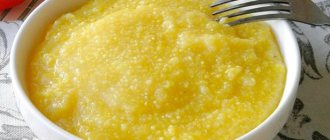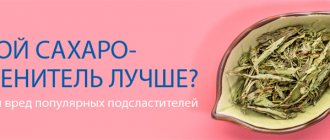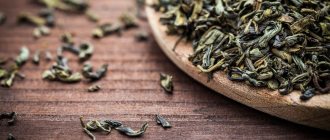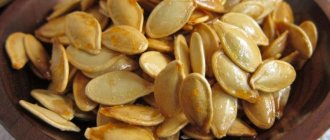Diabetes mellitus is an endocrine disorder characterized by a persistent increase in blood glucose concentration due to a lack of insulin (a pancreatic hormone). This is a common pathology that has recently become younger. To feel good, a diabetic must make lifestyle changes and follow a diet.
The patient's diet should consist of 50% complex carbohydrates. Vegetables, fruits, legumes and grains are sources of organic matter.
Many patients are interested in the question of whether it is possible to eat rice with diabetes. There is no definite answer to this question; it all depends on the type of cereal and its properties.
Benefits of rice for diabetes
Rice is a popular food product, a cereal crop with elongated grains. The time it takes to digest cereals depends on the variety. Rice cereals are used to prepare dietary dishes.
Rice for diabetes normalizes metabolism, strengthens the immune system and regulates glucose levels
The energy value of the product is approximately 340 kcal, 100 g of rice contains:
- proteins – 7 g;
- fat – 0.6 g;
- carbohydrates – 77.3 g.
Doctors recommend eating rice for type 2 diabetes, as the grain contains complex carbohydrates. These substances normalize metabolism, strengthen the immune system, and regulate the concentration of glucose in the blood.
In addition, the cereal contains elements of group B (B1, B2, B3, B6), which improve the functioning of the nervous system and contribute to the body’s energy production. Thanks to amino acids, new cells are formed. In addition, rice does not contain gluten (an allergenic protein), so it is considered a hypoallergenic product.
Rice contains virtually no salt, so cereals are recommended to be included in the diet of people predisposed to edema. The grains contain valuable minerals: calcium, phosphorus, iodine, zinc, iron, etc.
Diabetics are interested in the question of which variety of rice is best to supplement their diet. This is exactly what will be discussed further.
Useful qualities and chemical composition
There are more than one and a half dozen varieties of rice. The cereal crop is widely used in the traditional cooking of many nations, from Asia to Europe. The uniqueness of rice cereal is that the less it is processed, the more beneficial properties it retains.
Rice grains contain almost half of the B vitamins, which are specifically prescribed for diabetics to maintain health:
- B1 thiamine – stimulates blood circulation;
- B2 riboflavin – helps normalize metabolism;
- B3 niacin – participates in the regulation of cardiovascular activity;
- B6 pyridoxine – strengthens nerve fibers;
- B9 folic acid – activates tissue regeneration.
| Microelements | Macronutrients |
| zinc, manganese, iron, fluorine, boron, copper, selenium, etc. | silicon, potassium, phosphorus, magnesium, sulfur, magnesium, calcium, manganese |
Rice contains nonessential and essential amino acids (arginine, valine, leucine, aspartic and glutamic acid and others). The cereal also contains monounsaturated fatty acids palmitoleic and oleic (omega-9), polyunsaturated fatty acids: linoleic, linolenic, Omega-3 and 6.
Diseases for which rice cereal is recommended by doctors:
- Bronchitis and bronchial asthma. Cereals help cleanse the bronchopulmonary system of phlegm.
- Diseases of the renal apparatus. The cereal has diuretic properties.
- Chronic diseases of the gastrointestinal tract (gastrointestinal tract). Rice is able to strengthen the intestinal walls and heal erosive lesions of the mucous membrane.
- Intoxication and diarrhea. The product is a natural adsorbent.
Eating rice dishes is useful for neuropsychological disorders.
Benefits of Brown Rice
Brown rice is a grain whose processing process does not remove the bran membrane from the grains. It is the husk that gives it such a shade.
Brown cereals do not contain simple carbohydrates, which increase glucose concentrations. This rice contains complex carbohydrates, vitamins, minerals, and polyunsaturated fatty acids. In addition, it contains water-soluble fiber and selenium.
Thanks to the husk, brown rice retains many nutrients
Thanks to the husk, brown cereal retains a huge amount of nutrients. That is why it is recommended to include it in the diet of diabetics. However, overweight patients should avoid this product.
Beneficial features
This cereal was included in the diet for diabetics and was approved and recommended by doctors until the recent sensational discovery by scientists at Harvard University in 2012.
According to the results of their study, white rice harms the diabetic body by significantly increasing sugar levels, which results in the development of a more complicated form of type 2 diabetes. It follows that white rice grains are contraindicated for diabetics.
In the treatment of diabetes, alcohol tincture of propolis can be used.
The causes of lipodystrophy are given here: article.
You can learn about the healing properties of kiwi here.
You can replace white grains with brown (unpolished) rice, brown, red, black or steamed. Let's take a closer look at each of these products.
Brown rice
It does not contain simple carbohydrates and does not increase blood sugar levels. The grains contain a lot of vitamins, complex carbohydrates, fiber, which easily dissolves in water, selenium, and polyunsaturated fatty acids. It is very useful for diabetes - it saturates the body with the necessary substances and microelements, which are preserved due to the fact that during processing only one layer of husk is removed from it, and not two, as in white.
Brown rice
– low-calorie. Effectively used to cleanse the body and lose weight. It has no contraindications. True, it has a short shelf life, and at home it must be kept in the refrigerator or freezer.
Wild rice (black)
– or “forbidden”, as it is called, is a rather rare species. In ancient times, it was included in the diet of only imperial families. Due to the fact that it is assembled by hand, it is rarely found on sale and is expensive in price. The richest in beneficial nutrients, it tastes like a nut.
Red rice
Recommended specifically for diabetics. Normalizes sugar, removes harmful substances, has an increased level of dietary fiber and antioxidants. The taste is reminiscent of rye bread, soft and delicate.
In Chinese medicine, it was awarded to the best warriors after victories so that they could quickly restore lost strength.
Parboiled rice
steam treated before grinding. During the processing process, all useful substances (vitamins and minerals) are transferred from the husk to the kernels of the grains. Hence the name “steamed”. The idea for such rice processing was proposed by the military and the United States, and American scientists implemented it. It is interesting because it retains its taste and properties after heating.
Impact on the body
From all of the above, we conclude that rice can not only be consumed for diabetes, but is even necessary. The product is really healthy, tasty, and affordable. You just need to control your diet, carefully selecting varieties depending on the above characteristics.
Many are accustomed to it, to its undoubted positive characteristics and taste, but the fact that it increases blood sugar levels and provokes a complicated form of type 2 diabetes cannot be ignored.
Brown rice for type 2 diabetes
This is a cereal crop, during the processing of which the bran and husk are preserved, that is, the rice is not completely cleaned. Brown rice is considered a low-calorie dietary product. This cereal contains a lot of beneficial properties, so it is recommended for diabetics.
Brown rice contains elements of group B, which normalize the activity of the central nervous system, heart and blood vessels. The grains contain vitamins, minerals, and fiber.
Brown rice normalizes the functionality of the central nervous system, heart and blood vessels
Endocrinologists strongly recommend consuming brown rice for type 2 diabetes. This is explained by the fact that cereal contains coarse dietary fiber, which regulates the amount of sugar and cleanses the body of cholesterol.
Benefits of wild rice
This variety of cereal is known under different names: wild rice, black rice or water tsitsaniya. This product is a leader in the amount of useful substances that are simply necessary for patients with diabetes (especially type 2).
Black rice is the leader in the amount of nutrients
Ingredients of black rice:
- proteins;
- amino acids;
- alimentary fiber;
- elements of group B;
- zinc;
- magnesium;
- manganese, etc.
The cereal contains no fats or low-density lipoproteins. Tsitsaniya contains several times more vitamin B9 than brown cereals. Even overweight patients can consume wild rice for diabetes.
The energy value of black rice is 101 kcal/100g. Dietary fiber effectively cleanses the body of toxins and waste.
Recipes
Healthy food can also be tasty and appetizing:
| Exotic rice for diabetics | To prepare you need to take:
Fry the onion and celery in olive oil. Mix all products, add salt to taste. Pour 100 ml of hot water and simmer covered over low heat for 15 minutes. | A dish fit for a king |
| Zucchini fantasy | Ingredients:
Cut the zucchini into rings and fry in olive oil. Mix lemon juice with crushed garlic, pepper and chopped dill. Pour the dressing into the rice and add salt. Garnish the dish with slices of fried zucchini. |
|
| Pilaf in a slow cooker | Prepare:
Cut the meat, onion and bell pepper into cubes. Place in a slow cooker. Add 1 tablespoon of vegetable oil to the rice, stir, add on top of the meat. Add 2 cups of water and salt. Cook on the “pilaf” setting for an hour. |
|
After reading the article, you will learn everything about what kind of rice you can eat if you have diabetes. This will help make your diet more varied and avoid complications.
Parboiled rice cereal
During the processing of this cereal crop, the unhulled grains are soaked in water and then doused with hot steam. After heat treatment, the seeds are dried and ground. Thanks to special technology, about 80% of the beneficial substances pass into the grains from the shell.
Steamed cereal normalizes sugar levels
Ingredients of steamed rice:
- a nicotinic acid;
- elements of group B;
- tocopherol;
- potassium;
- phosphorus;
- iron;
- magnesium;
- selenium, etc.
In addition, cereal contains starch, which is slowly absorbed by the intestines. As a result, sugar is gradually absorbed into the blood. For this reason, steamed rice is allowed to be eaten by type 2 diabetes, since the product regulates glucose concentration.
Red rice
This type of unpolished cereal contains dietary fiber, antioxidants, minerals and other beneficial substances. This product cleanses the body of toxins, waste, “bad” cholesterol, and normalizes glucose concentration. Dishes with red rice are good for diabetics, but you should follow moderation. Excessive consumption increases the likelihood of blood sugar spikes.
Red rice is good for diabetics, but you need to follow moderation
Culinary secrets
Cook with pleasure!
In order for a dish made from magic grains to be tasty and healthy, you need to know the cooking rules.
Tips from the chef
The cooking method depends on the type of product:
| Rice variety | Cooking rules |
| White | Important:
|
| Brown | Recommendations:
|
| Red rice | Need to know:
|
| Black | Recommendations:
|
Negative effects of white rice on diabetics
The only grain that patients should avoid is white rice. This is the most common variety of rice. White grains have positive taste, but the level of nutrients in this variety is much lower.
Negative properties of white rice for diabetes:
- White rice can hardly be called diabetic, as it increases the concentration of glucose and provokes type 2 diabetes.
- This product disrupts the functioning of the liver, stomach and other organs.
- This is a high-calorie product that contains 73 g of simple carbohydrates per 100 g of cereal. By comparison, the same amount of brown rice contains 23 grams of simple carbohydrates.
- During the processing of white rice, harmful additives are used, such as flavor enhancers.
That is why it is better for patients with diabetes to avoid eating white cereals.
Results
Diabetes mellitus is a serious disease, 80% of which is controlled by proper nutrition. Products allowed in the diet should not have a high calorie content, fat content or glycemic index. Rice for diabetics is a product that can be consumed in limited quantities subject to certain conditions:
Refuse white varieties of cereals (brown, red, and black varieties of cereals are allowed on the menu). Do not combine with dough products. Strictly monitor the portion size and frequency of consumption of rice dishes. In the diabetes compensation stage, you are allowed to eat rice soup twice a week or a rice side dish (porridge) once. In the decompensated stage of diabetes, eating rice is prohibited.











